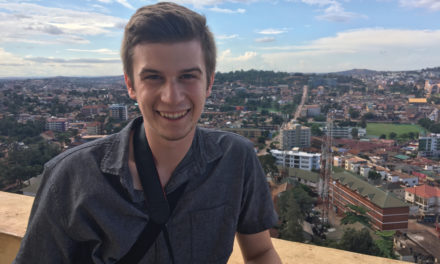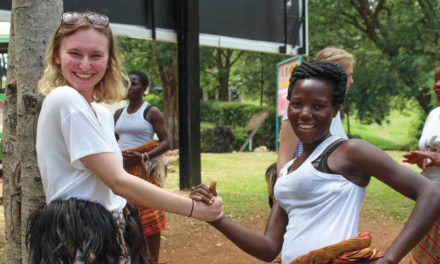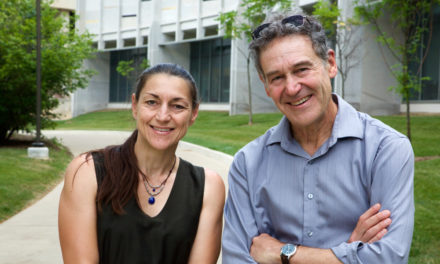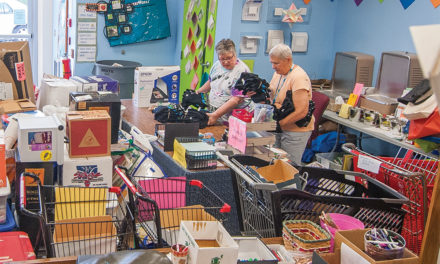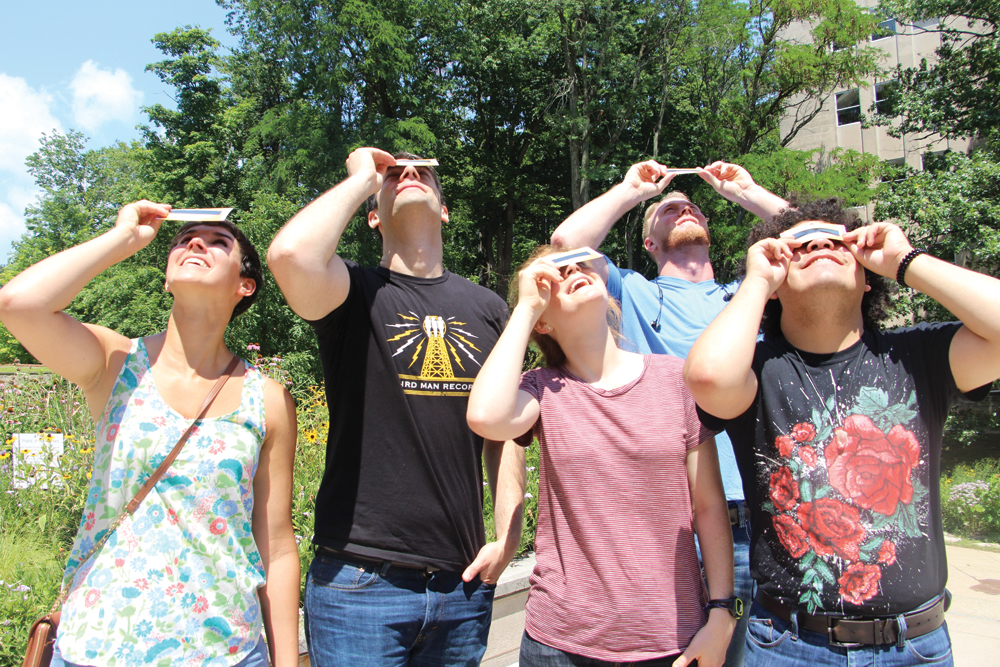
Indiana University students practice safe solar viewing with IU Solar Eclipse Cards in preparation for the August eclipse. (l-r) Kate Hummels, Chris Puccis, Madeline Danforth, Nicholas Neidig, and Mannuel Arriaga. Photo by Alexandria Eady, IU Office of Science Outreach media intern
BY SUSAN M. BRACKNEY
On August 21, for the first time in nearly 40 years, North America will see a total solar eclipse, and while Bloomington is not in the line of totality, a partial eclipse is reason enough to hold a few special celebrations.
To ready eclipse-watchers of all ages, WonderLab Museum of Science, Health and Technology will hold “Solar Saturday: Prepare for the Solar Eclipse!” on Saturday, August 19, from 1 to 3 p.m. Attendees 3 and older will have the chance to build take-home eclipse projectors, see the sun through a hydrogen-alpha solar telescope, and more. General admission is $8, and the first 100 attendees receive free NASA-approved, eclipse-viewing glasses.
At Indiana University, the College of Arts and Sciences Office of Science Outreach, the Department of Astronomy, and the Arts and Humanities Council have teamed up to offer their own eclipse-themed presentations—including Celestial Poetry, Lunar Folklore, and Nocturnal Biology—on Monday, August 21, at the Conrad Prebys Amphitheater and elsewhere on campus.
“The path of totality is relatively narrow, but all of North America will see at least a partial eclipse. In Bloomington, the sun will be 94 percent covered by the moon,” says Catherine Pilachowski, the Daniel Kirkwood Chair in Astronomy at IU. “Six percent doesn’t sound like a very big difference, but it is literally night and day. The birds start to roost for the night, then the sun comes out. It’s startling.”
Want to see 100 percent totality? It’s close, but plan on a three- to four-hour drive each way. “Kentucky or southern Illinois are the best places overall for the duration of the eclipse,” Pilachowski says. The maximum duration of totality will be two minutes and 40 seconds.
Whether viewing a total or partial solar eclipse, eye protection is critical. Gazing directly at even the tiniest sliver of sun can permanently damage retinas. “The viewing glasses we recommend are so dark that you can’t see anything through them except the sun. They’re designed specifically for this purpose,” notes Pilachowski. Alternately, you can view the eclipse indirectly by making a pinhole projector or simply by examining the shadows tree leaves cast on the ground during the event.
If, somehow, you miss this eclipse? There’ll be another total solar eclipse crossing the United States in April 2024, with the path of totality cutting right across Bloomington.
For more information on the eclipse, visit magbloom.com/solareclipse17.


